The indulgent royal menus that capture a moment in time
Royal menus have always been indulgent, each capturing a moment in time.
The man who would become King George V, was born when his grandmother, Queen Victoria, was alive. His father and brother were next in line to the throne.
George was a spare and not that much effort was put into his education. He was not considered bright and at age 12 was on a naval training vessel. His brother, Albert, went to Cambridge. (In January 1892, Albert died during an influenza pandemic. Oddly, George dropped his marriage plans and wed his brother’s fiancee, Princess May.)
George had sailed the world, including to Australia, and on the trip between Melbourne and Sydney implausibly recorded that he had seen The Flying Dutchman – the legendary but mythical ghost ship.
So we should not be surprised to learn that over dinner at Sandringham House in Norfolk, one of the favoured royal households personally owned by the Britain’s monarchs, George sneered: “What in heaven’s name is this?” when spotting a pear-shaped avocado at the dinner table. “Dessert at the start of a meal?”
To be fair, while avocados had been introduced to Europe as early as the 16th century, the tropical fruit did not become part of French cuisine – with which the British royal family was obsessed – for another 300 years.
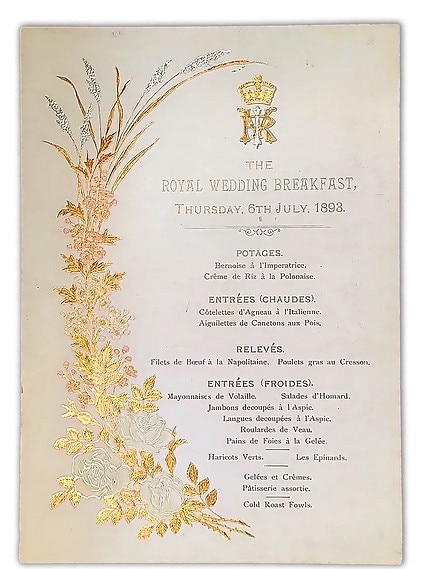
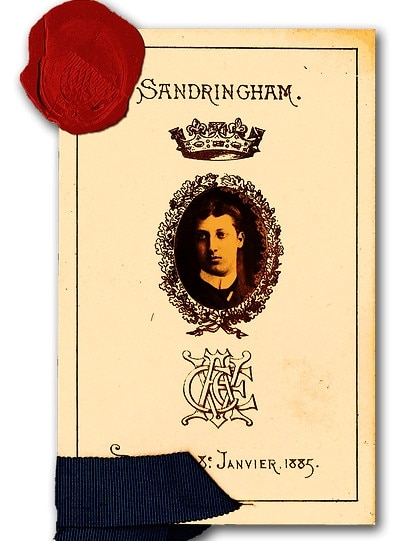
George was royally ambivalent to the considerable effort it had taken to acquire these equatorial “pears”, ripe and ready for eating, in the middle of winter on his sprawling and freezing estate.
“Another one of David’s pranks,” the king scoffed at the tomfoolery of his eldest son, and soon-to-be King Edward VIII, who had taken it upon himself to meddle in the royal kitchens.
Although Queen Mary “seemed” to enjoy the simplistically halved and pitted avocado dressed in oil and vinegar, the king was less fussed and “I was never again asked to obtain avocado pears for the royal menus”, remembered a comptroller at Buckingham Palace.
Three sovereigns later, in 1970, Queen Elizabeth II cruised Queensland waters aboard the royal yacht, Britannia. And there, boldly on her personal menu-card with gold-embossed monogram and decorated with a water colour of her floating palace, appeared Avocado Britannia. The avocado had belatedly received royal assent.
That was the queen’s third of 16 visits to Australia that started in 1954.
It’s now 70 years since the newly crowned queen, aged 27, pushed her high heel down at Sydney’s Farm Cove and, in doing so, became the first reigning Australian monarch to set foot here. This month, Charles III has become first reigning King to do so.
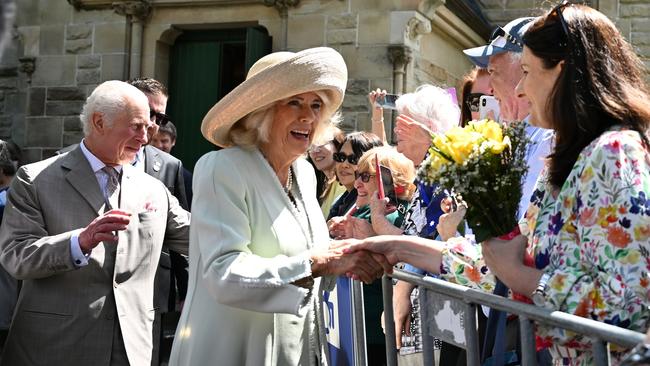
That 1954 tour culminated in Australia’s first Royal Banquet at the Old Parliament House where our smitten prime minister, Robert Menzies, gushed to the queen that her visit was the “most joyous thing in our lives”. It would certainly have been a lofty benchmark for Prime Minister Anthony Albanese to surpass, as he drafted his words of welcome for King Charles and Queen Camilla.
As Queen Elizabeth was greeted at Parliament House, she sparkled with a priceless Romanov antique above her head – the Vladimir Tiara, with its giant emeralds swinging from loops of diamonds.
For days in advance of the banquet, the Mildura fishermen had been angling for the Murray cod that were to be grilled and, with mouth-watering simplicity, dressed in butter sauce. The fish would be tethered by the gills in the river until ready for transporting to Canberra, to be served as fresh as possible.
With almost 500 guests, the royal family would once again introduced to new world epicurean delights.

Struggling to accept that menus no longer needed to be written in French, the 1950s instead became a masterclass in unimaginatively bland descriptions of food.
The humdrum menu for that royal banquet offered a Paw Paw Cocktail to the queen and her husband, the Duke Edinburgh, served with a glass of Australian Special Pale sherry. Then, following the grilled cod, came “roast breast of chicken with asparagus tips” paired with a Great Western Imperial Reserve Champagne 1946, Special Vintage.
“At the request of the prime minister,” reported one newspaper, “the menu was printed in English.” And so, the next course offered to the royal couple was perhaps the most boringly named dessert in the Commonwealth’s history: Ice Pudding Royal Style, which, apparently, used strawberries from Tasmania. Perhaps Pouding glacée à la royale aux fraises may have sounded better, after all.
The state government banquets for the travelling royal couple were hardly any more adventurous. With all the panache of a Hoyts cinema sweets stand, the Queensland parliament offered Her Majesty a dessert of “Ice Cream Novelties”, while the government of NSW served an equally uninspiring Ice Cream Mould with Crushed Almonds.
But food was obviously grand and plentiful, and London’s The Daily Mirror observed the banquet marked the “end of austerity at gala parliamentary functions” as Australia, like the UK, emerged from the prolonged aftermath of war rationing and shortages.
Aside from the official menu, the canapé tables included oysters, lobster, crayfish, suckling pig and even, the Canberra Times insisted, a stuffed boar’s head. Over the centuries this porcine treat, usually served with a Cumberland sauce made from redcurrant jelly and port, was the culinary spectacle at all truly grand royal banquets, with its protruding tusks, ferocious red eyes and trumpets of herbs sprouting from the ears.
When the banquet came to its end with chocolates, liqueurs and the official toasts, the menu’s program quaintly noted “Her Majesty will speak to her people”, which came courtesy of a live broadcast to the nation.
In little more than another decade her son, the now King Charles III, made his first visit to Australia as the 17-year-old Prince of Wales. His welcome was a little less dramatic; spending just one night at Government House before being whisked off for a stint at Geelong’s Timbertop school for “the best part of my education – the part I enjoyed most”.

That education was no doubt where Charles III developed his predilection for a soft-boiled egg with Vegemite on soldier-finger toast, which a royal chef once gossiped that our now sovereign enjoys after hunting or a game of polo.
Many other future kings had visited Australia. But until this month none was our reigning sovereign. Kings George V and VI had visited as dukes of York; and Edward VIII as the Prince of Wales. Even the heir to the Austro-Hungarian throne, Archduke Franz Ferdinand – whose assassination in Sarajevo would trigger World War I – paid our shores a visit in 1893. Ferdinand’s visit to NSW was low key, but it is recorded that the keen shooter saw off some local wildlife and took it back to Europe – including brolgas and at least eight koalas. He also took back some platypus.
In his diaries, the haughty archduke makes little mention of Australian fare, and instead notes the “impertinence” of two businessmen asking to shake his hand while he flimsily attempted to dine incognito at Sydney’s then iconic Australian Hotel.
Not so incognito was the farewell party His Imperial Highness threw for 500 Sydneysiders before he departed the still-bridgeless harbour, aboard imperial Austria’s torpedo-carrying cruiser, SMS Kaiserin Elisabeth.
The heir to the Habsburg throne marvelled at the buffet his personal chef had overseen, which included “a legion” of dishes presented as sailing ships, royal crowns, ponds of fish and “all imaginable land and sea monsters stood next to each other in a colourful row, so that the buffet before us resembled a toy store”, recalled the archduke.

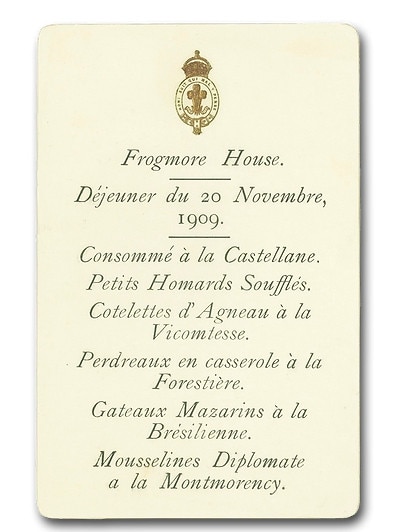
Sydney Harbour will again play host to a royal banquet – of sorts – during this week’s visit of King Charles.
Unlike his mother’s maiden tour 70 years ago, instead of a glittering royal banquet set among a tangle of diamond tiaras, flowing ballgowns and tailed tuxedos, this King will enjoy a harbourside community barbecue to mark the inaugural visit of their majesties – a sort of royal Bunnings sausage sizzle.
Organisers should note that the King has long been a champion of organic foods at his private Highgrove home, long before such things were so vogue.
And, while the harbour views offer a fitting majesty for our visiting King and Queen, the edge of these waters are also the site of an often overlooked and rather nasty royal dining commotion.
It was at Sydney’s Clontarf in 1868 that Australia’s first-ever royal tour descended into Australia’s first ever attempted political assassination. Queen Victoria’s second son, Prince Alfred, the Duke of Edinburgh, had just finished his lunch at a community picnic and delighted in a champagne toast to his mother where he was assured the Australian colonies “gloried in being reigned over by such a queen”. On March 12, as the duke left the picnic tent, a would-be assassin, Irishman Henry O’Farrell, shot the visiting royal in the back. Alfred survived. O’Farrell was speedily hanged on April 21. Sydney’s Royal Prince Alfred Hospital is named in honour of the survivor.
No matter what our Prime Minister’s republican sentiments, Australia’s welcoming receptions this month can only be a significant improvement on that first royal visit almost 160 years ago.
While Anthony Albanese has invited the predictable smattering of public figures to a humble “parliamentary reception” in the Great Hall of our Parliament House, it is not planned to be a culinary crescendo of their majesties’ visit. Also not planned, we can guess, are any pawpaw cocktails or iced puddings “royal style”.
As they head Down Under and raise a glass during their in-flight meal, the King and Queen may be tempted to “cheers” each other with a smug grin and a wink, in the knowledge that Albanese, just weeks ago, was forced to drop the short-lived position of an assistant minister for the republic.
Cheers to that.
Jake Smith is a collector of royal menus and they can be seen at https://www.royal-menus.com/the-collection



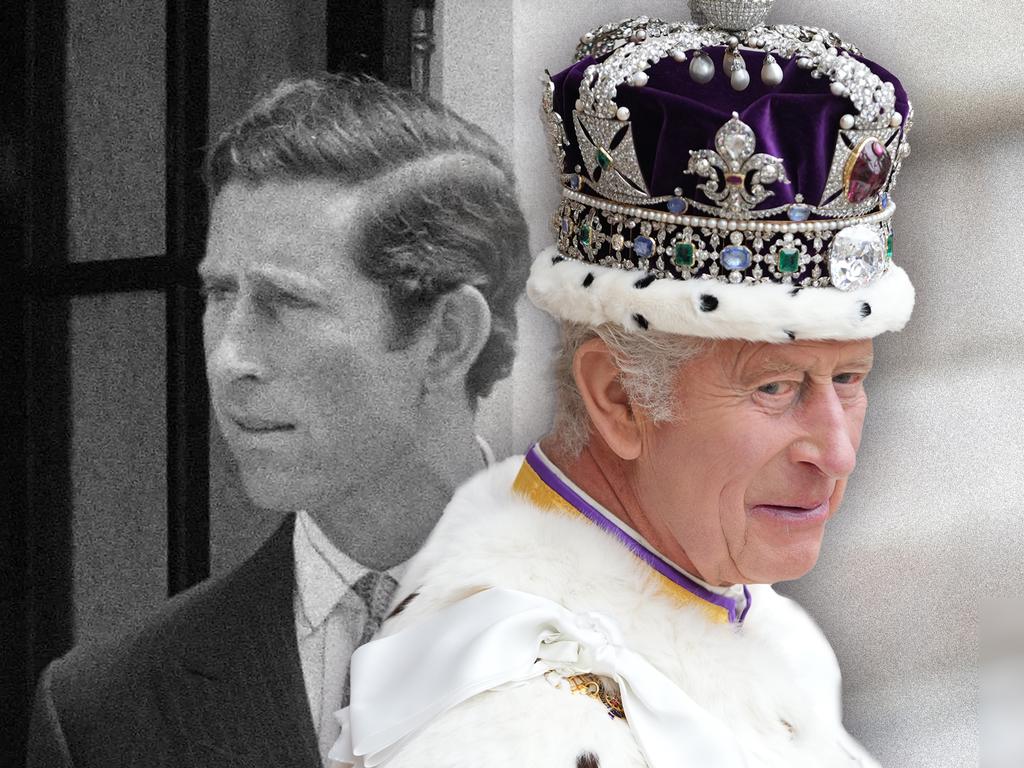


To join the conversation, please log in. Don't have an account? Register
Join the conversation, you are commenting as Logout